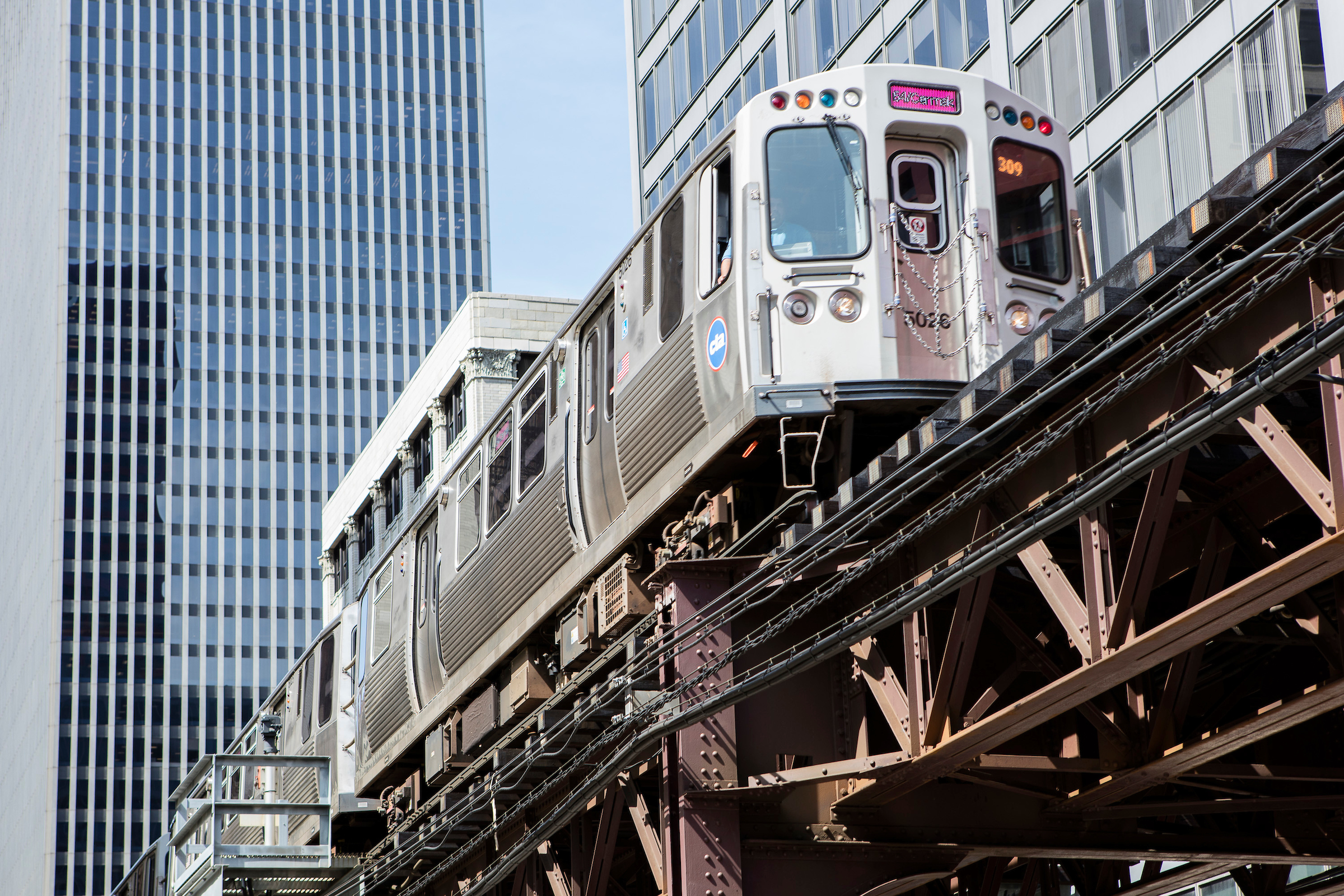 Ride-sharing has the potential to divert passengers from public transit and back into cars unless public transit offers better options, find researchers at DePaul University. (DePaul University/Jeff Carrion)
Ride-sharing has the potential to divert passengers from public transit and back into cars unless public transit offers better options, find researchers at DePaul University. (DePaul University/Jeff Carrion)CHICAGO — Public transit agencies should find ways to integrate with ride-sharing services for trips within Chicago, recommend researchers at DePaul University. A new study from the Chaddick Institute of Metropolitan Development finds that convenience and comfort are factors that divert passengers from public transit to ride-sharing services, including Uber and Lyft.
“The Chicago Transit Authority can attract new riders by working with ride-sharing providers to allow consumers to mix different travel options. Right now, they must choose one or the other, and many default to ride-sharing, particularly when transit involves long walks and late-night transfers," said Joseph Schwieterman, director of the institute and a professor in the School of Public Service. Chaddick Institute researcher Mallory Livingston co-authored the study.
Ride-sharing — services in which several parties share a vehicle on one given trip— has the potential to divert passengers from public transit and back into cars unless public transit offers better options, said Schwieterman. Part of this is how passengers perceive their experience on both modes of transport. DePaul researchers analyzed how differences in price, travel time and other service attributes affect choices among ride-sharing options. They looked at 3,075 fares for more than 614 trips on Uber, Lyft and Chicago Transit Authority buses and trains and found:
- The fares charged for ride-sharing services Lyft Line and UberPool have fallen both in absolute terms and relative to Lyft and Uber and to the Chicago Transit Authority. Despite a recent increase in the city’s tax on these services, the inflation-adjusted cost of riding these services fell by around 5 percent between 2016 and 2018.
- Uber and Lyft tend to be relatively costly for Chicago passengers traveling to and from downtown. When expressed in terms of the cost per hour, the average trip in an Uber or Lyft costs more than $50 per hour saved across the entire sample, making them uneconomical for most commuters. Between the neighborhoods, however, the value proposition of ride-sharing is greater.
- Passengers place great value on nonmonetary costs, including a desire to avoid walking and perceived difference in comfort and safety. If a public transit experience is considered favorable, the average commuter is five times less likely to opt for ride-sharing than when it is considered unfavorable.
"Above all else, we find that transit and ride-sharing serve different roles, with each adding something different to the mobility equation," said Livingston. She adds: "Public transit agencies need to worry about the little things— such as station amenities, employee courtesy and vehicle cleanliness — because they make a big difference when customers are tempted to divert to ride-sharing."
To adapt to these changing modes of transportation, the study’s authors recommend that the Chicago Transit Authority:
- Integrate transit services and ride-sharing into the Ventra app and other online tools.
- Work with companies like Uber and Lyft to offer discounted rides to CTA bus and rail-transit stations at times when feeder bus service is not available as well as during special events.
- Create pilot programs with Uber and Lyft for disabled passengers and those on medical-related trips.
- Establish “guaranteed ride home” programs that provide additional flexibility to commuters who avoid driving.
The full study, “Uber Economics: Evaluating the Monetary and Nonmonetary Tradeoff of TNC and Transit Service in Chicago, Illinois,” is available at http://bit.ly/chaddickDPUrsrch.